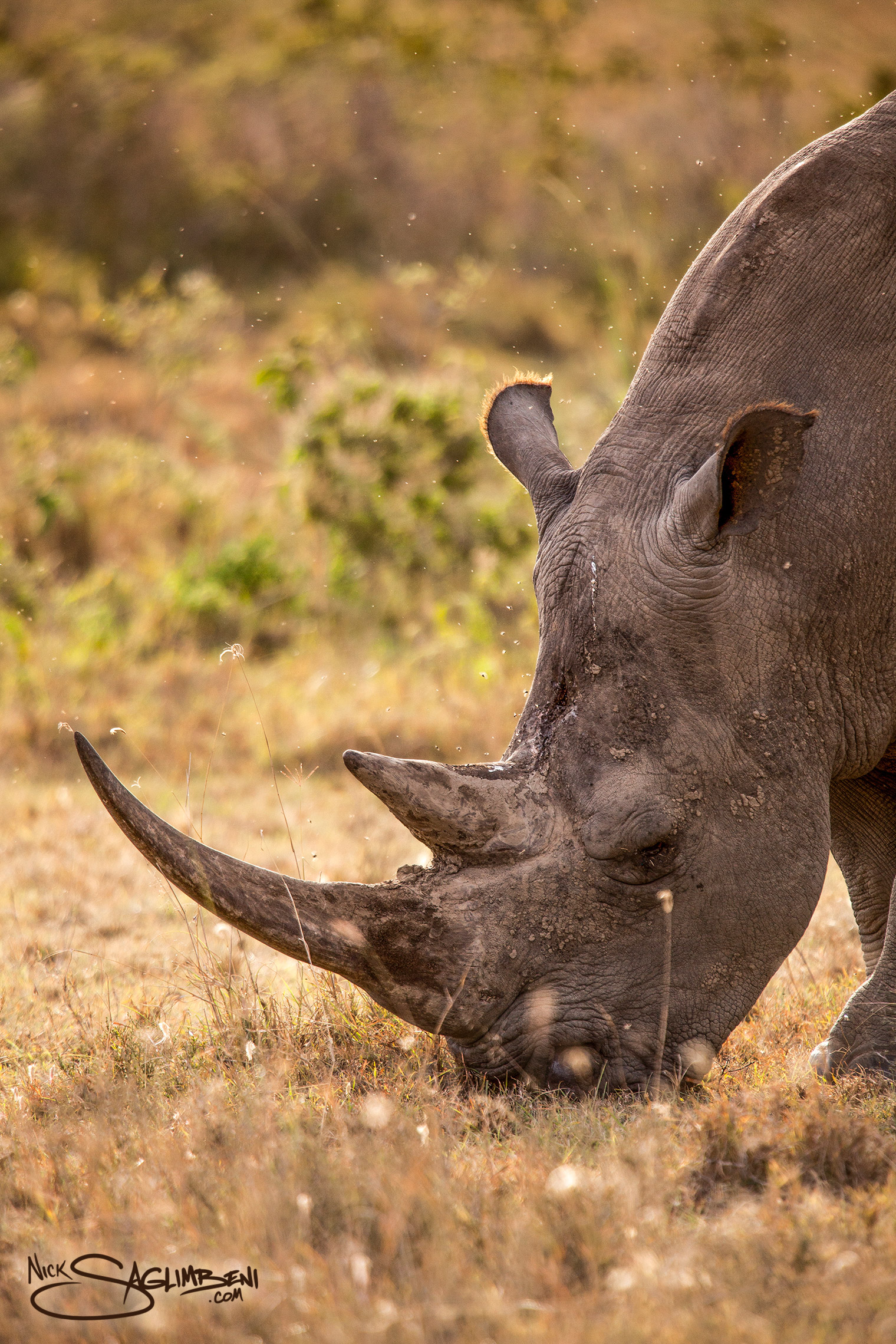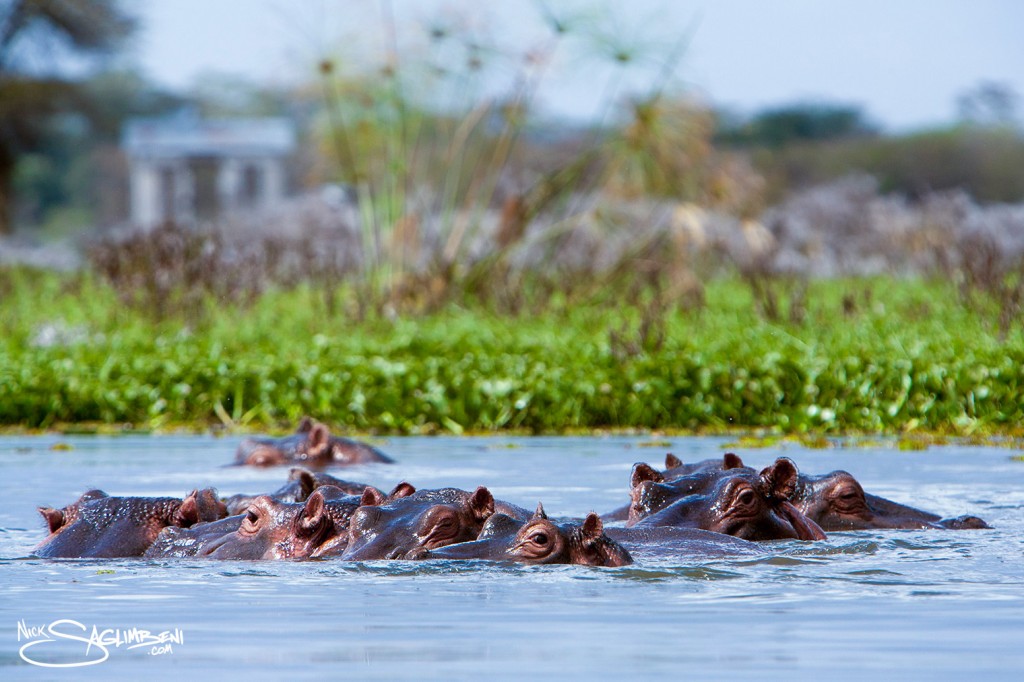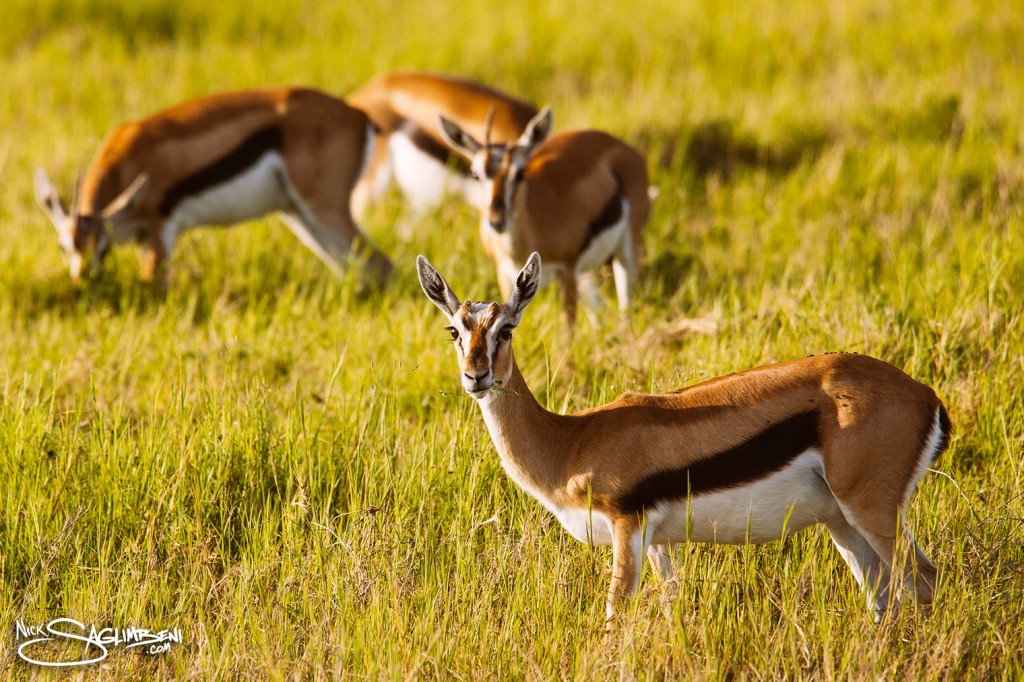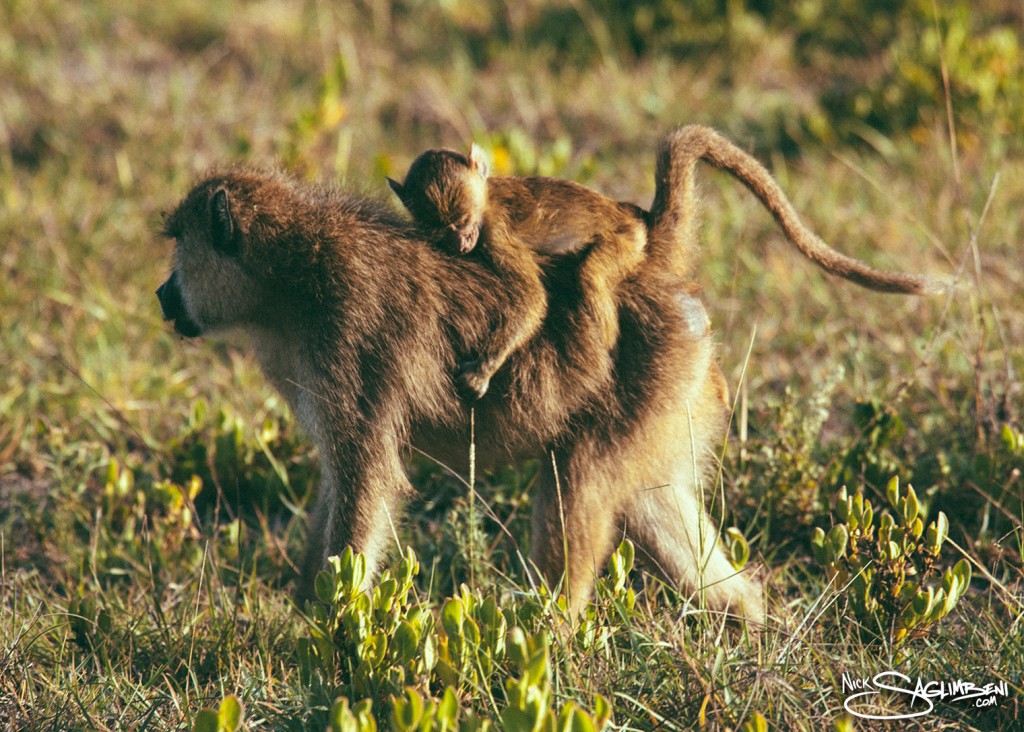Posts Tagged ‘Kenya’
The Wonderful, Precious, and Disappearing Wildlife of Kenya
I had planned to post a larger travelogue later this summer, but amidst the recent attention surrounding the sport killing of some of our world’s most cherished creatures, as well as the news that we’re now down to 4 northern white rhinos in existence, I’m bumping up the wildlife gallery from our most recent company trip to Kenya.
I always say, if you can take one trip in your life, it should be to East Africa. Make it your study abroad, your honeymoon, or your retirement gift to yourself. Nowhere in the world have I met friendlier people and seen more natural beauty—or happier animals. And I don’t mean happy in the way your dog pretends to be when he’s manipulating you for a treat. I’m talking about wild animals—that most of us only see caged in a zoo—living in their natural habitats, loving, playing and relaxing, raised and surrounded by their families. It’s one of the few things I’ve seen in life that I would call perfect.
My hope is that these images will serve as a reminder of how beautiful and precious wildlife on our planet is, as we are nearing a critical turning point that may result in the extinction of several species within our lifetime.
My thanks to our amazing safari guide, Ali Khan of Vumbi Jeep Safaris, who I am proud to call a friend. There is no better guide for seeing the wildlife of Kenya, and you are in for the adventure of a lifetime.
For a deeper look, see our previous Kenya travelogues here.
Photos by Nick Saglimbeni and Joyce Park
Large images above and below: Descriptions in captions
Thumb Gallery: Click to enlarge, descriptions on full-size
Model Kersti Pitre Shoots a Bullseye for SlickforceGirl

Hold still, this might leave a mark.
Certain journeys change you forever. For me, among those journeys are my travels to Kenya. So many of the people I met there possessed a warmth and strength in spirit that I have rarely seen, and I ended up making friends I’m certain I will keep for life.
When I set out to create the SlickforceGirl team, I knew that one of the characters must be Kenya-inspired. It would take someone with an equally strong heart to play the role, and I found just what I needed with model Kersti Pitre. South Africa-born and Southern California-raised, Kersti experienced her very first shoot right here at Slickforce only a few years ago. Now, get ready for her to impress viewers with her range as she tackles one of the toughest heroes of the bunch.
A very special thanks goes out to the women of the Mama Saruni Masai in Amboseli, Kenya, for hand-crafting Kersti’s jewelry, and to my very good friend Ali Khan of Vumbi Jeep Safaris for coordinating our trans-Atlantic operation.
See more of Kersti and our other heroes at SlickforceGirl.com!
Photo by Joyce Park for SlickforceStudio
Hair by Ganohon Aline Ansansame
Make-up by Therese Williams
Styled by Diana Chan
Jewelry hand-crafted in Amboseli, Kenya by the Mama Saruni Masai Women’s Group
Exploring Kenya for WMB 3D
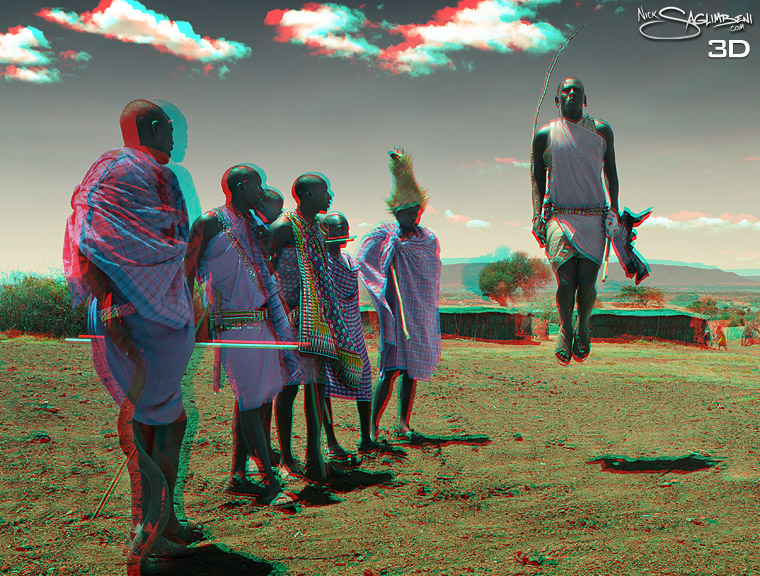
Maasai Mara: The men of Oltepesi village perform the Moran dance to display their strength as tribal warriors.

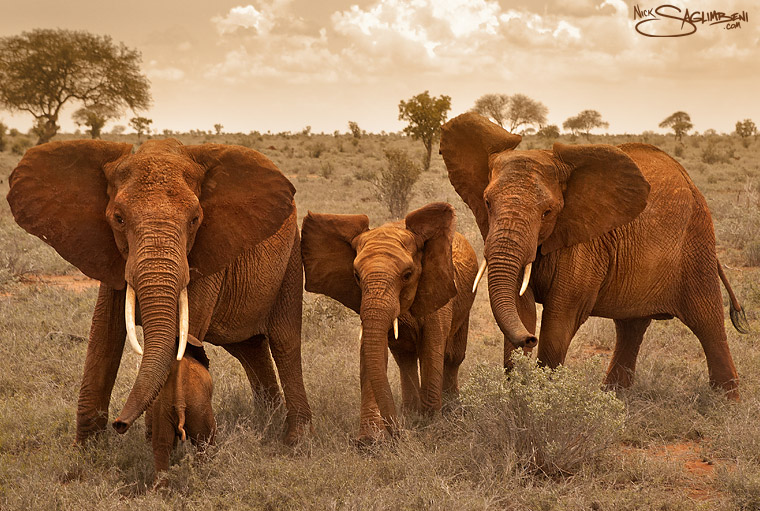
The infamous red elephants of Tsavo square off to protect their young.
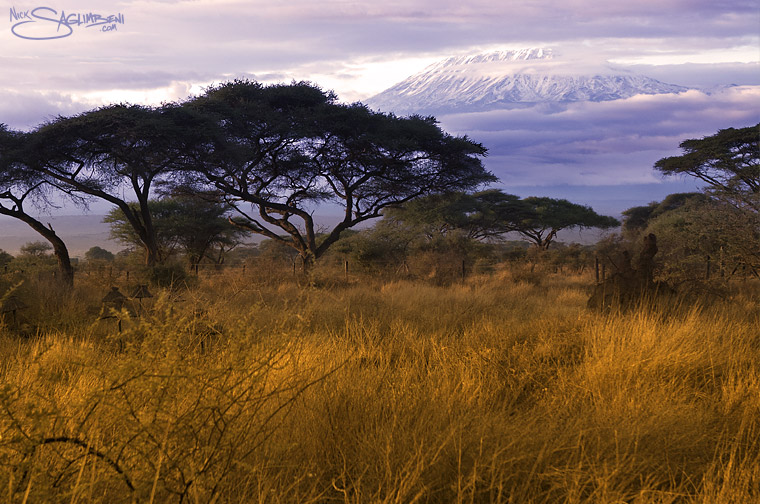
Amboseli: Morning clouds part to reveal Mt. Kilimanjaro behind the acacia trees
Just before the holidays, I had the pleasure of returning to one of my favorite places in the world—Kenya—for issue 2 of WMB 3D. I reunited with my good friend Ali at Vumbi Jeep Safaris, and we embarked on a whirlwind tour of the country. I visited my Maasai friends in Oltepesi village from my first trip to Kenya, and then we explored the wild, capturing breathtaking sites in stunning 3D. For the full gallery in both 2D (ex: elephants above) and 3D (ex: Maasai tribe above), grab your copy of WMB 3D #2, and check out the video above for a behind-the-scenes look at my adventures.
Travelogue: KENYA — Of Sacred Forests and Monkeys

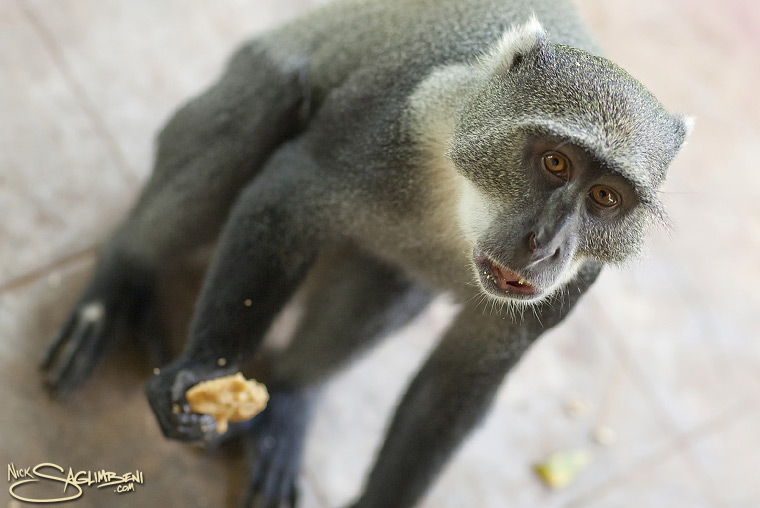
Though I certainly found my safari and my experience living with Maasai to be mind-blowing, I must confess that if I had to sum up my trip to Kenya in one word, it would be a very easy answer: monkeys.
My beach hut, though mere steps from the Indian Ocean, was surrounded by giant trees—palms, baobab, and mangrove—which were homes to families of monkeys. The monkeys were eerily intelligent, and they would watch you—study you—like cynical mini-humans, trying to determine if you were something to fear. Much to my surprise, I befriended a few of of the gray Sykes monkeys—the black-and-white Colobus monkeys didn’t care for me very much. By the end of my trip, I would walk out onto my porch, shout some wild animal call into the sky, and a half-dozen or so monkeys would literally drop out of the trees, hanging by their tails, and hop onto my front porch. There they sat, patiently waiting, like dogs without the barking, until I produced some fruit from a bag—which they took from my hand, and sat there quietly and ate. I had never seen anything like it. They happily ate my bananas, apples…even my cookies! The sheer interaction with the monkeys alone put my safari experience to shame.
I also made a point to visit Kaya Kinondo, one of the actual sacred forests that the forests in Avatar were based on. The trees were out of this world, with roots growing in all directions, even up. The forest contained medicinal trees, plants used for cooking and spices, and even some foliage reserved for rituals to the gods. It was a peaceful place, and I could see how generations of Digo tribes were able to find their spiritual center here.
When I returned home to my beach hut that night, I was shocked to find the place had been trashed—and I knew someone had broken in. Strangely, my camera and my laptop were untouched, but surrounding the overturned furniture there were banana peels everywhere. Who would break into my house, I thought, eat all of my bananas and leave my Canon 5D? Then it hit me: I had been robbed by monkeys.
INDEX:
Top Images: Kaya Kinondo, Sykes monkey eating my cookie
1-5: Kaya Kindondo, the sacred forest
6: My beach hut in Diani
7: Black-and-white colobus monkeys
8-14: My Sykes monkey friends, eating all of my food
Travelogue: KENYA — The Coast, Nights in Africa
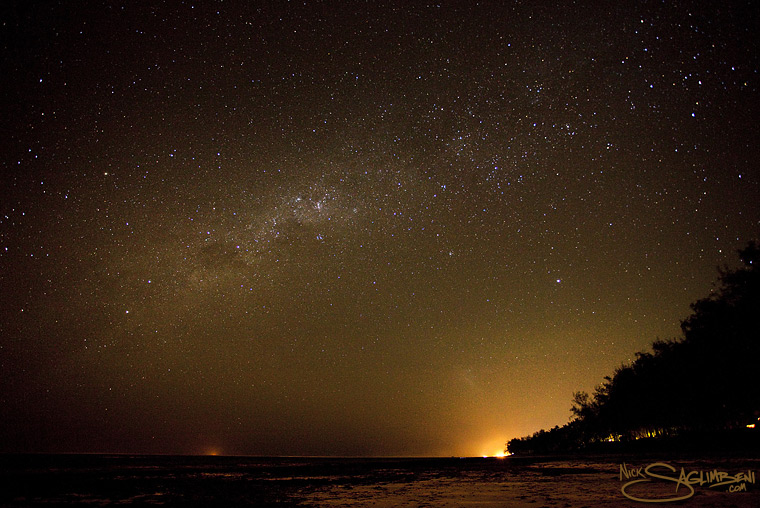
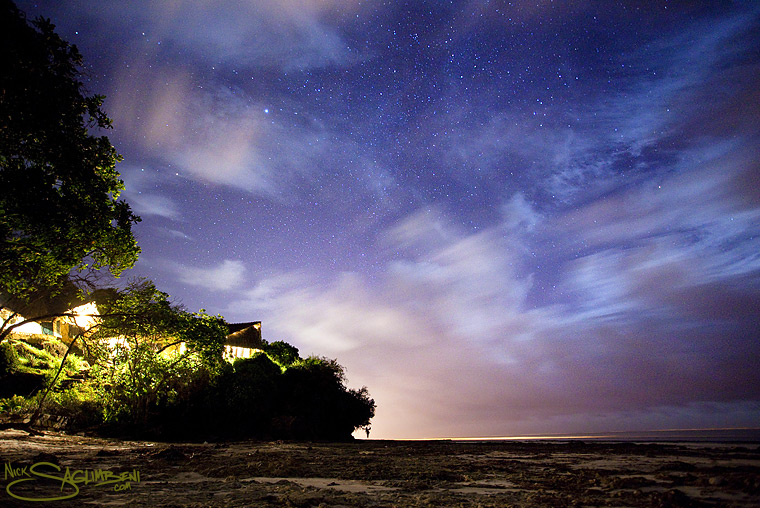
It’s safe to say that the Kenyan coast is the closest thing I’ve found to paradise. After my excursions around Nairobi and inland, I decided to head to the coast for something a little more tranquil. I took an overnight train from Nairobi to Mombasa, which was awesome…one of those old rickety sleeper cars…I felt like I was on the Orient Express. I found Mombasa a bit too crowded and commercial for my taste, so I headed south to Diani beach, an hour or so away from the Tanzanian border. Once I arrived, I knew within minutes that I had found what I was looking for.
I rented a 2-bedroom beach hut, just steps from the Indian Ocean, for under $50/night. I couldn’t believe it. Every morning, a fisherman named Ali would come to my door and sell me fresh fish, and I bought fruits and vegetables from a local farmer. I’d never had passion fruit before, and it instantly became my favorite fruit ever. It was the healthiest menu I had ever eaten. Around Diani were many wildlife sanctuaries. Among them was Shimba Hills, where I spotted the rare sable antelope, only found two places in the world. I reminded myself, however, that I came here to relax, so I made a point not to burn myself out sightseeing.
The beaches were perfect, white sand as far as the eye could see, and not a soul on them, save a few trinket peddlers. The ocean was unbelievably warm, so when I wasn’t vegging out on the beach, I made sure to get in lots of scuba diving. I made friends easily in Diani—people were incredibly welcoming and sincere. I even managed to find a crew eerily similar to my friends back home, which made me often forget I was on the other side of the world.
There are no words to describe the nights on the coast. Just take a look at the pictures and you’ll understand why. Barely any light pollution allowed for the brightest stars and the most incredible astral photography. Every night I would stumble blindly from my hut to the beach in the pitch black, where I set up my camera for night shots. I couldn’t believe the exposures I was getting, and it further cemented my love for Kenya. Tutaonana, inshallah.
INDEX:
1-4: Night train to Mombasa, that #2 shot is a 30-second exposure at 3am.
5-8: Shimba Hills, grasshopper, sable antelope, elephants
9: My beach hut in Diani
10: The view from my beach house
11-15: My shade sanctuary, white sand beaches
16: My friends in Diani: Didi, Gitz, Sidney, Ali Khan
17-21: Nightfall on the Kenyan Coast
Travelogue: KENYA — Living with the Maasai
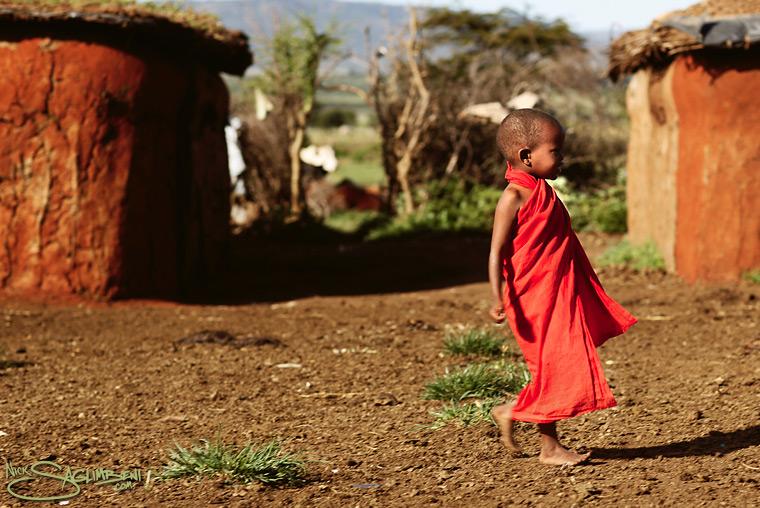
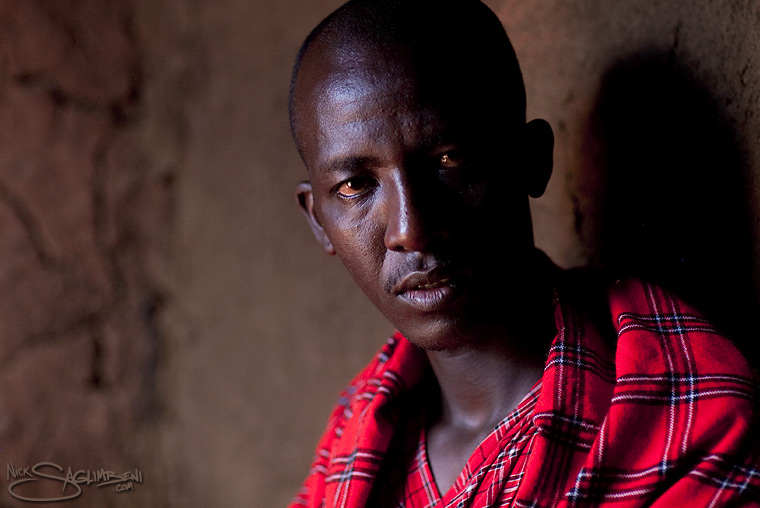
I can see it so clearly. I’m 8 years old, and I’m in the Pleasant Plains elementary school library. I’m looking through my first National Geographic, and that’s when I see it—my first African tribe. I knew it right then: I had to get there—I was going to go live with them, learn their language, dress in their clothes, and do my darndest to become one of them. That was my dream, anyway.
So last month, while I’m on safari in Kenya at the Masai Mara wildlife preserve, I ask my driver if he can put me in touch with a local village chief (mzeé). He thought I was a bit nuts, but he came through with flying colors. He found me a guide who not only lives in a nearby Maasai tribal village (manyatta), but actually speaks a bit of English thanks to working nights as a safari camp security guard. I meet my guide, Meingati, the next morning, and he introduces me to the son of the chief, Kamwana (the chief was visiting friends in another village). Kamwana gives me a price to hang out in the village for an hour and take pictures. I tell him politely, no thank you—I want the real deal. So he agrees to let me stay in the village for two days, and it only costs me a cow.
My new friends welcomed me to Oltepesi village. They introduced me to members of their tribe, and showed me the usual tourist displays, like how to make fire, and a few tribal dances, including the ceremonial jumping, where men compete for brides by seeing who can jump the highest (seriously). I finally convinced them they didn’t need to entertain me—I just wanted to kick it with them however they, well, kick it. So we went off into the bush, tracked antelope by their poop, brushed our teeth with frayed sticks, and sat in the shade dodging the heat of the sun and napping. Then, we went to the Maasai market, which only happens once a week—I considered my timing extremely lucky. Hundreds, if not thousands, of Maasai walk from villages as far as Tanzania, to barter, haggle, and shop for everything from goats and cows to weapons (daggers, staffs, bows and arrows, AWESOME! I felt like I was playing D&D). I met many of their friends, some from distant lands, and ALL extremely friendly. I used this as my opportunity to learn some of the local Maasai language (Ma), which is completely different from the Swahili spoken throughout Kenya. Among my favorites were “Ero Sopa” (a familiar ‘hello’), “Ashi ashi” (thank you), and “Olesére ölcheré” (goodbye friend).
When we got back to the village, I played with the children for nearly two hours. I was surprised that a few of them even understood a little English. I realized then that the indigenous tribes are in every bit as much danger of cultural extinction, perhaps more, than the animals in the neighboring plains are of a physical one. That night, I drank cow milk from a giant gourd, listened to tribal songs, and slept on a floating cowskin stretched between four poles—one of the best nights of sleep in my life. The dwelling I stayed in was incredibly well-constructed, built by the women in the village, who do all the construction and build the entire village themselves. I lay there on my cow-bed, in awe of the wonder of the world, and enamored with my surroundings. The cool cross-breezes put me to sleep in no time.
The next morning, Kamwana came to my dwelling. He had a noticeable confidence apart from the others in the village, one that can only come with knowing you’re going to be the next chief (and having five wives). He gave me a Maasai bracelet, beautifully and thoughtfully sewn together bead-by-bead, and a shúkà, the traditional cloth cape worn by the men. He also gave me a Maasai name: Sarúni, meaning ‘the helpful one.’ I left just before nightfall on the second day, thanking my friends and wishing them well—and hoping it would not be the last time I would see them. I didn’t take as many pictures as I thought I would have. I felt a barrage of photos would have turned my experience into little more than a circus, and I wanted to keep it as genuine as possible. Sometimes you just need to turn off the camera and actually live.
My time with the Maasai was a defining moment in my life, because it symbolized the completion of a childhood dream. I only hope that these tribes will still be around for future generations to dream about. Olesére, ölcheré.
INDEX:
TOP IMAGES: (1) Maasai boy in Oltepesi village, (2) my guide, Meingati
ROW 1
1: (left to right) Meingati, Kamwana, Yenku, unknown
2: Village girl and traditional Maasai home
3: Maasai women performing a ceremonial dance
4: Kamwana making fire
5: Looking to Tanzania
6: Welcoming me into the village
7: Inside Kamwana’s home (30 second exposure…it was pitch black until your eyes adjusted)
ROW 2
1: Drinking cow milk from a hollow gourd
2: Yenku
3: The future chief, Kamwana (right)
4-7: Oltepesi village children
Travelogue: KENYA — Safari at Masai Mara
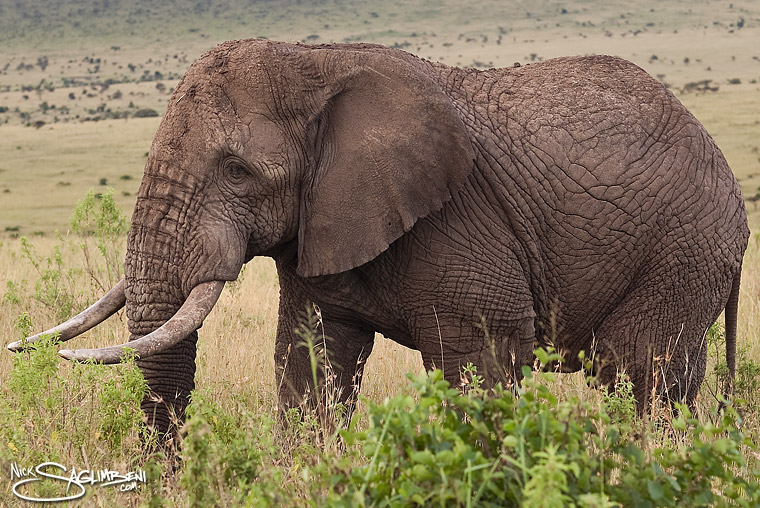
A few times a year, I force myself to leave the country. For me, it’s the four Rs: A chance to relax, reflect, refocus your energy, and remind yourself why you work so hard.
I spent a month in Kenya this spring, and two days after I hit the ground, I was on a bus to Masai Mara, the enormous wildlife reserve on the Kenya/Tanzania border. After all, what self-respecting photographer can pass up a chance to see the greatest animals on earth in their natural habitats?
I brought my Canon 5DII on this trip, as the Hassy proved much too bulky and inflexible for this scenario, and I was really happy with the Canon results on my Morocco trip last year. I was actually shocked to see that almost everyone on safari was shooting with small point-and-shoot digitals, save the always-prepared Japanese tourists.
My jeep driver, Lawi, was incredibly accommodating, and had an impeccable sense of timing. We spotted cheetahs chasing antelope, a family of lions taking down a buffalo, and huge, mind-blowing elephants—creatures so wildly beautiful the camera can’t even do them justice. Seeing a wild elephant up close (we were 6 ft away) makes you feel like you’re in Lord of the Rings…they are officially now my favorite animals on earth.
Index:
1: Storm on the Mara
3: Wildebeasts
8: Lilac-breasted Roller
11-13: Lions hunting & killing African buffalo
14: Masai Mara at sunset







